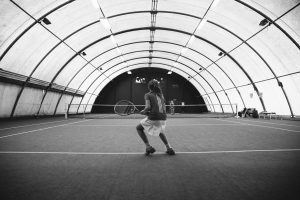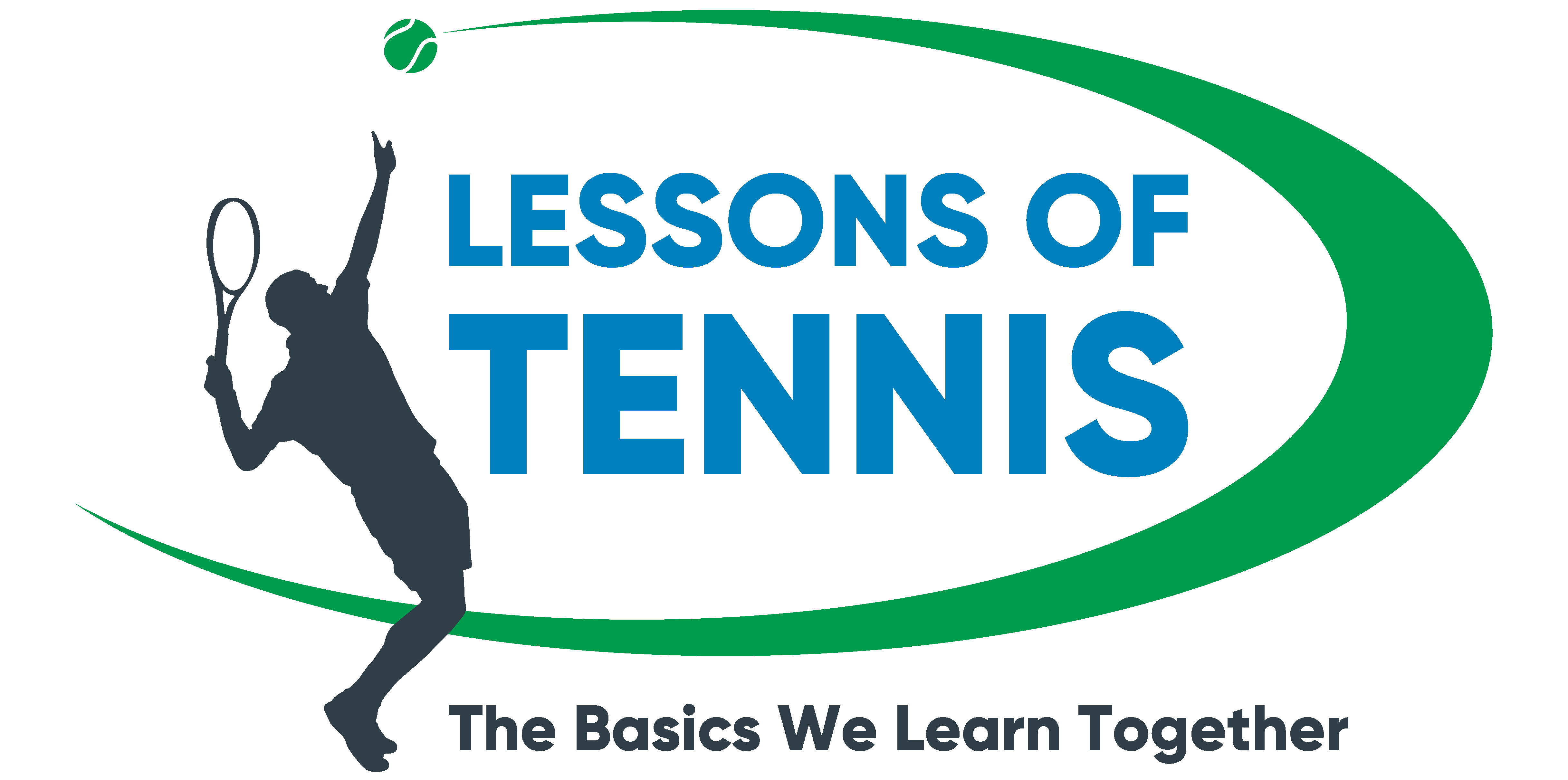Training with focus and strategy will help you be a better tennis baseliner. The advantages being a baseline tennis player gives you are an ability to control the point from an offensive or defensive position. You are rarely out of a point when consistently approaching the game with this style.
Positioning, footwork, and an ability to hit effectively from both the forehand and backhand side are the key components to a proper baseline style of play.

Why Become a Baseliner?
The baseline style of tennis allows a player to focus more on two shots, the forehand and backhand. Of course, all shots will be used in every tennis match, but the baseliner will mostly avoid volleys and net play in general. This will narrow the focus of training to the two aforementioned shots. This does not mean training for serves, volleys, and approach shots should be ignored. Quite the contrary. It is necessary to train for all shots since they WILL come up in every match.
The positioning of the baseliner focuses more left and right than forward and backward. The baseliner tends to retreat to the baseline, even when presented with an approach shot. Let it be stated that this isn’t always advisable, as a proper approach shot can give the balance of power of the point to the approach player in a flash. These opportunities are to be taken advantage of whenever possible, so training for these shots are necessary and encouraged.
This being said, much of today’s tennis is played from the baseline. Although not necessarily a counterpunch style of tennis, it is a more defensible playing style, allowing the player to rarely be in a compromised position. Because the amount of time spent on the practice court tends to be heavily tilted to hitting from the baseline, this makes focused training easier to find and delve into.

Being a Baseliner is a Good Thing
A baseliner will be able to control a point, and, sometimes just as importantly, not lose control of a point. They will play to their strengths, forehand and backhand ground strokes, and avoid their weaknesses, such as volleying and net play.
The power of their serve will vary from player to player. No longer will a power serve automatically lead to an approach to the net. A player is just as likely to camp out on the baseline with a power serve as move forward. A player with a power serve will usually garner a return that is “punched” back to the server. It is expected that the baseliner is lined up perfectly for a shot to be directed at their discretion with an amount of power capable of gaining complete control of the point or even producing a winner. While a serve and volleyer would be in fantastic position to capitalize on a powerful serve, the baseliner can use the power advantage as well.
A baseliner can play and still maintain control of the point with a weaker serve. A serve like this can invite a more powerful and better located ball from the returner, so having proper positioning is imperative to their next shot.
It is essential to not get criss crossed with your feet here. Being able to react properly without ANY WASTED MOVEMENTS will gain or lose your point control against a player with an above average return. Knowing where to step and having the muscle memory to instinctively act while also knowing where to step are two different things. Practice footwork and positioning. This habit will allow you to stay where you need to be and not react too soon to end up far from the right spot. And a loss of the point is instantaneous when that occurs.
A baseliner should be looking for openings on the other side of the net. Moving the opponent from side to side will create angles and open up the court. Not only will this produce winners, but also tire the opponent as well. A great point from a baseliner can be a quick one-two victory as well as a drawn out rally if the result was you were able to stand in the middle of the court while pushing the opponent from side to side. Much satisfaction comes from the defeat of the other player after exhausting themselves to reach every ball you seemed to put just inside their reach enough to hit it back but not enough to hit it with effectiveness. When this is working throughout a match, the baseliner will see the match get easier and easier to win. A lot of blowouts happen when a baseliner is “on” that day.
Being a Baseliner is a Good Thing?
A baseliner’s way of life is nice when things work as they should. But what about that great returner that doesn’t allow you to gain immediate control of a service point? How about that serve and volleyer that shortens your reaction times and cuts off your angles and geometry? This can be tough.
The player who can bring a baseliner to the net as often as possible has limited their greatest strength (the baseline position) and brought forth their greatest weakness (the net). Pushing the baseliner back with heavy topspin shots and mixing in some drop shots is an extremely effective way to bring this about. Moving them forward and back, north and south, is awesome rather than giving them their comfort of left and right (east to west) movements.
Make them uncomfortable. Get them out of their groove. If they retreat to the baseline consistently, then use the opportunity to punish them with passing shots and even drop shots to really get under their skin.
Try using a slice backhand to slow the game to your advantage and bring them in a bit toward the net. This shot is effective to maintain balance of power in the point with a baseliner.
Use your own positioning to make short of their reaction times and long on their forced movements. Try to maintain control of the point as you go along, and have patience for the opportunities to gain control on your return. They will present themselves.
A Tennis Strategy for Success
The baseline strategy can yield some wonderful results and give you an opportunity to play consistent tennis with many other styles and opponents. It can also leave open the ability to control the point, as it is a more defense style than an attacking style like the serve and volleyer (although it can be adapted to an attacking style). Finding consistency in your ground strokes, comfort in your approach shots, great positioning with proper footwork will all lead to a successful baseline tennis strategy that can help you to becoming a better tennis player!

